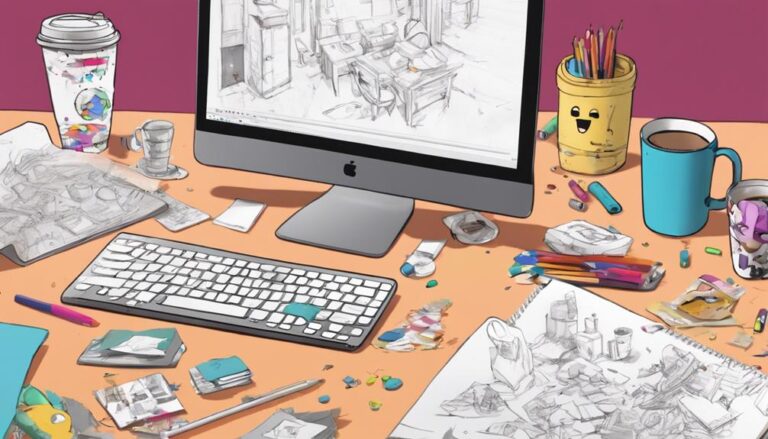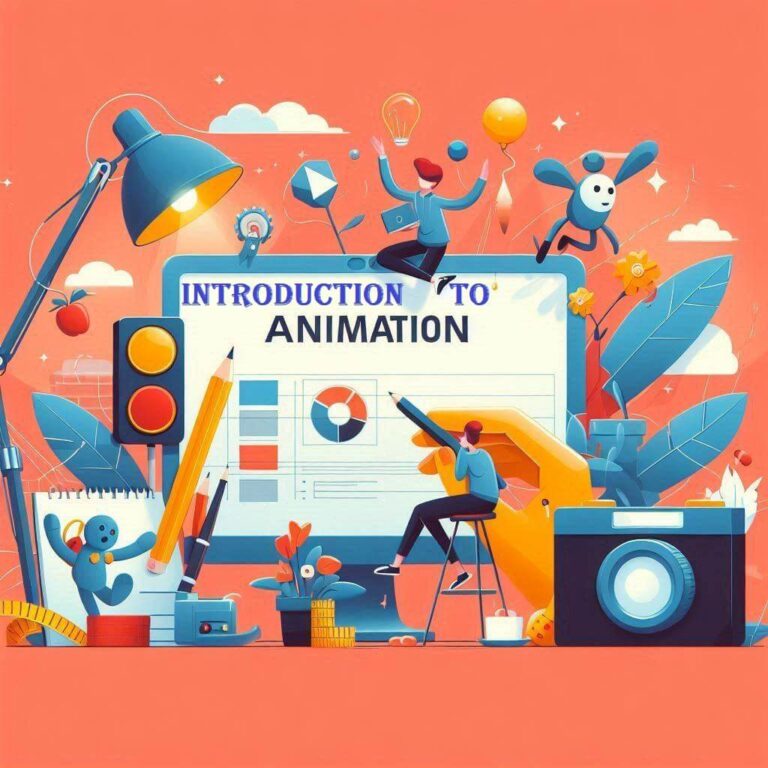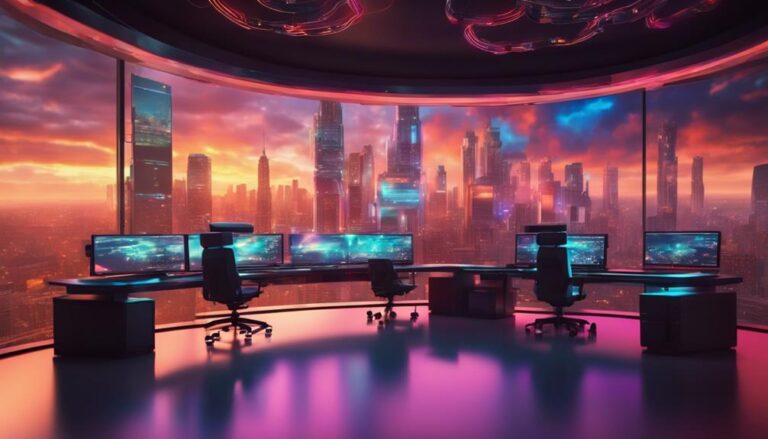5 Essential 3D Animation Techniques for Motion Graphics
As you venture into the world of motion graphics, you'll quickly realize that mastering 3D animation techniques is key to creating truly mesmerizing visuals. You're likely familiar with the basics, but to take your skills to the next level, you need to focus on five essential techniques that will elevate your game. By incorporating these techniques into your workflow, you'll be able to craft immersive experiences that leave a lasting impression on your audience. But which techniques will give you the edge you're looking for? Let's explore the must-know methods that will take your motion graphics to new heights.
Key Takeaways
- Master camera movement techniques to control the pace and rhythm of a scene, creating energy and tension through sweeping motions and clever cuts.
- Understand lighting fundamentals, including lighting ratios, to set the tone and atmosphere of an animation and create mood, depth, and emotional resonance.
- Create realistic textures by assigning materials, diffuse maps, bump maps, and normal maps to objects to add depth, detail, and surface interaction.
- Use physics simulations, such as soft body dynamics and rigid body collisions, to create realistic and dynamic movements that mimic the real world.
- Utilize advanced particle system control to fine-tune particle behavior, emitter customization, and fine-tuning emitter properties to craft visually stunning simulations.
Mastering Camera Movement Techniques
Capturing the essence of a 3D animated scene relies heavily on mastering camera movement techniques, which enable you to dynamically frame shots, create mood, and guide the viewer's attention.
You'll want to use camera dynamics to control the pace and rhythm of your scene, creating a sense of energy and tension. This can be achieved through the use of sweeping motions, dolly zooms, and clever cuts.
To create a cohesive visual flow, you'll need to carefully plan your camera movements.
Start by blocking out the key shots and angles, then experiment with different camera paths to find the one that works best for your scene.
Consider using a storyboard or animatic to visualize your camera movements before committing to the final animation.
Understanding Lighting Fundamentals
As you've refined your camera movements to create a compelling visual flow, you're now ready to explore the next key aspect of 3D animation: crafting a lighting scheme that elevates your scene's mood, depth, and emotional resonance. Lighting is a vital element in setting the tone and atmosphere of your animation. To achieve a balanced look, understanding lighting ratios and how they impact your scene is vital.
| Lighting Ratio | Effect on Scene |
|---|---|
| High contrast (10:1) | Dramatic, high-contrast look with deep shadows |
| Medium contrast (3:1) | Balanced look with moderate shadows and highlights |
| Low contrast (1:1) | Flat, even lighting with minimal shadows |
| Ambient Occlusion | Adds depth and volume to objects |
When crafting your lighting scheme, consider color scripting to create a cohesive visual language. This involves assigning specific colors to different elements in your scene to guide the viewer's attention and evoke emotions. By mastering lighting fundamentals, you'll be able to create a visually stunning animation that engages and resonates with your audience.
Creating Realistic Textures
When creating realistic textures for your 3D objects, you're aiming for a visual representation that's believable and immersive.
Developing realistic textures involves carefully balancing color, roughness, and reflectivity to create a believable visual representation of your 3D objects.
To achieve this, you'll need to master material mapping, which involves assigning textures to specific areas of your object.
Start by creating a detailed diffuse map, which defines the object's color and pattern.
Then, create a bump map to add surface detail and depth.
Bump creation is a vital step, as it simulates the way light interacts with the object's surface.
Animating With Physics Simulations
By incorporating physics simulations into your animation, you can create more realistic and dynamic movements that mimic the way objects behave in the real world. This technique allows you to breathe life into your 3D models, making them interact with their environment in a believable way. With physics simulations, you can create complex animations without having to manually keyframe every movement.
Soft Body Dynamics: Simulate the behavior of soft, flexible objects like cloth, rubber, or flesh. This is perfect for creating realistic character movements or simulating the flow of fabrics.
Rigid Body Collisions: Create realistic collisions between objects, taking into account their mass, velocity, and friction. This is ideal for simulating crashes, explosions, or other high-energy events.
Gravity and Buoyancy: Add realistic weight and buoyancy to your objects, making them react to their environment in a natural way.
Friction and Constraints: Control the movement of objects by applying friction and constraints, such as simulating the movement of a car on a road or a character walking on a treadmill.
Advanced Particle System Control
With advanced particle system control, you can meticulously fine-tune the behavior of individual particles, orchestrating complex simulations that burst with realism and visual flair.
By delving deeper into particle behavior, you'll discover a domain of creative possibilities. You can adjust parameters such as velocity, acceleration, and drag to craft intricate interactions between particles and their environment. For instance, you can create wispy smoke trails or explosive bursts by tweaking the particle's birth, life, and death cycles.
Emitter customization is another key aspect of advanced particle system control. You can design emitters that mimic realistic sources, such as fire, water, or explosions, by adjusting their shape, size, and distribution.
By fine-tuning the emitter's properties, you can create particles that react naturally to external forces like wind, gravity, or collisions. This level of control allows you to craft visually stunning simulations that transport your audience to new dimensions.
As you master advanced particle system control, you'll reveal the secrets to creating breathtaking motion graphics that leave a lasting impression.
Frequently Asked Questions
What Software Is Best for Beginners in 3D Animation and Motion Graphics?
You'll find Blender, a free and open-source software, ideal for beginners in 3D animation and motion graphics, offering free trials and extensive online tutorials to get you started with its user-friendly interface.
How Do I Create a 3D Model From a 2D Design or Illustration?
You'll translate your 2D design into 3D by interpreting illustration elements, like lines and shapes, as volumetric forms. Use software like Blender or Maya to extrude, revolve, or loft your design, adding depth and dimensionality.
Can I Use 3D Animation for Live-Action Film or Television Production?
You can seamlessly integrate 3D animation into live-action film or TV production by using live action integration and camera tracking techniques, allowing you to blend CGI elements with real-world footage for stunning visual effects.
What Are the Essential Skills for a 3D Animator in the Job Market?
You'll need strong job requirements like proficiency in 3D software, storytelling skills, and attention to detail. To stand out, focus on portfolio building, showcasing your versatility and creativity through a visually stunning reel that highlights your technical expertise.
How Do I Protect My 3D Animation Work From Being Stolen or Plagiarized?
To safeguard your 3D animation work, you'll want to prioritize legal safety by watermarking and registering your projects. Consider digital fingerprinting to track usage, and use secure online platforms to share and collaborate, ensuring your intellectual property remains protected.
Conclusion
You've now got the skills to take your motion graphics to the next level.
By mastering camera movement, understanding lighting fundamentals, creating realistic textures, animating with physics simulations, and controlling advanced particle systems, you're ready to craft immersive experiences that transport audiences to new dimensions.
With these 5 essential techniques, you'll create visually stunning scenes that leave a lasting impression.
Get ready to push the boundaries of motion graphics and bring your creative vision to life!






